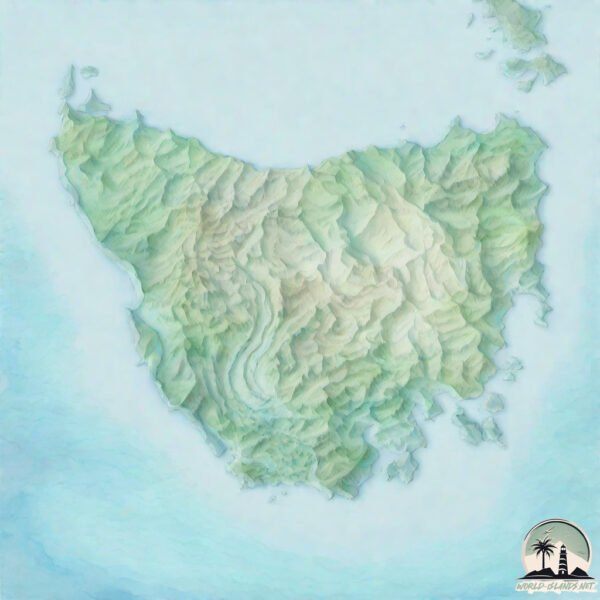Tasmania is a Giant Island spanning 64333 km² with a coastline of 4780 km.
Topography and nature of Tasmania
Timezone: UTC+10:00Timezone places: Australia/SydneyMax. Elevation: 1617 m Mt. OssaMean Elevation: 386 mVegetation: Evergreen Broadleaf ForestTree Coverage: 66%
The mean elevation is 386 m. Dominating the island’s landscape, the majestic “Mt. Ossa” rises as the highest peak, soaring to impressive heights. The island is characterized by Mountains: High, steeply elevated landforms. Characterized by both a high maximum elevation (over 500 meters) and a high mean elevation, creating rugged, mountainous terrains on islands.
Dominating Vegetation: Evergreen Broadleaf Forest
Vegetation: 13 vegetation zones – Exceptionally Diverse Island
Infrastructure and Travelling to Tasmania
Does the island have a public airport? yes .
Does the island have a major port? yes .
The mean population of Tasmania is 8 per km². Tasmania is Gently Populated. The island belongs to Australia .
The name of the island resonates across different cultures and languages. Here is how it is known around the world: Arabic: تسمانيا; German: Tasmanien; Spanish: Tasmania; French: Île de Tasmanie; Portuguese: Tasmânia; Russian: Тасмания; Chinese: 塔斯馬尼亞州
Continuing your journey, Schouten is the next notable island, situated merely km away.
Why "Nobody" Lives On Australia's Big Island State: Tasmania
Listen to the companion podcast episode here: ...
Tasmania Documentary 4K | Wildlife | Australia Landscapes and Nature | Original Documentary
Separated from Australia's mainland 12000 years ago, Tasmania is ...
Separated from Australia's mainland 12000 years ago, Tasmania is unlike any part of Australia. This documentary explores the ...
Why Does Nobody Live On Australia’s Beautiful Island State Of Tasmania? #shorts
Why Very Few People Live In Tasmania? #shorts Why does nobody live on ...
Why Very Few People Live In Tasmania? #shorts Why does nobody live on Australia's beautiful island state of Tasmania? Well ...
Australia is classified as Developed region: nonG7: Developed economies outside of the Group of Seven, characterized by high income and advanced economic structures. The level of income is High income: OECD.
News – Latest Updates and Headlines from Tasmania
Stay informed with the most recent news and important headlines from Tasmania. Here’s a roundup of the latest developments.
Loading...
Social Media Posts about Tasmania
Loading...
Please note: The data used here has been primarily extracted from satellite readings. Deviations from exact values may occur, particularly regarding the height of elevations and population density. Land area and coastline measurements refer to average values at mean high tide.

